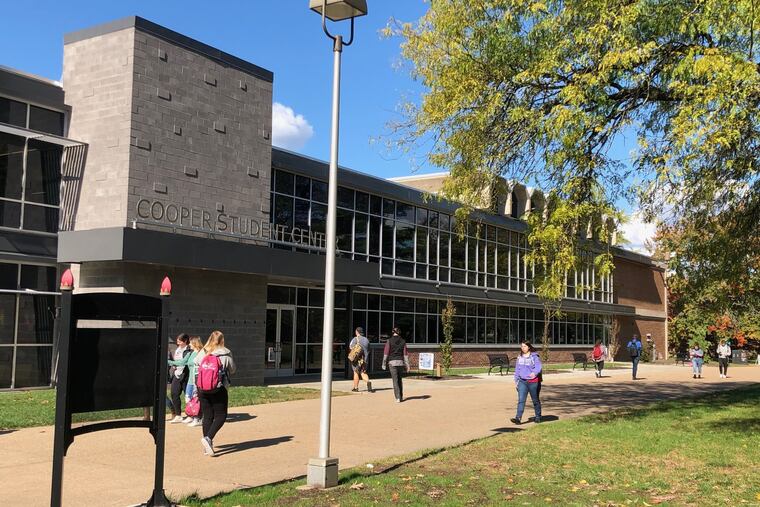Pennsylvania can turn its higher education disaster around | Opinion
Public higher education is the backbone of our state economy. We need to treat it that way.

Pennsylvania has a big problem, and it’s time we stop ignoring it. As Bob Fernandez reported in stark relief for this week’s Inquirer, the Commonwealth’s public higher education is in a dire state. To wit:
State funding per student cut in half between 2000 and 2018, placing us 47th in the nation in the percent of tax revenue devoted to public colleges and universities.
Student debt levels now second only to Connecticut, averaging over $37,000 per student.
Universities in peril as enrollment plummets to half of what it was less than 10 years ago due to a shrinking number of high school graduates, costs out of reach for many families, and cheaper tuition in neighboring states.
The picture for Pennsylvania’s community colleges is just as dire. Receiving even less money per student from the state and filling the gap with local funds and rising tuition, our community colleges are among the most expensive in the country. And a loophole allows them to charge double tuition to students who do not live in a school district or county that provides local support. For some of these students, community college is almost as expensive as a state-owned four year university.
Why should we as citizens view this as a crisis? It’s simple — public higher education is the backbone of our state economy. First, many of our public colleges and universities are the economic anchors of their communities. Second, if we don’t have an educated population, we can’t attract the kinds of living wage jobs that our state needs to thrive.
Most good jobs now require at least some college. So when high-wage companies look for a home, one of the first things they do is examine a state’s education attainment level. Pennsylvania’s is languishing below the national average, and behind neighboring states New York, New Jersey, and Maryland. Businesses can and will pass us by to locate in states that provide the workforce they want.
Also remember that high student debt doesn’t only hurt those with loans to repay — it hurts us all. Every monthly loan payment of hundreds or even thousands of dollars means fewer cars bought, delayed housing purchases, and less money to spend overall, hobbling the state’s economy.
» READ MORE: Should public college be free? Pro/Con | Opinion
But it is possible to transform Pennsylvania’s public higher education into the engine of economic growth we need. The recently formed Higher Education Funding Commission is gathering broad input on how best to fund public higher education and hold it accountable. This is good news, and an important first step. But for the Commission to succeed, it needs to be part of a comprehensive and coordinated strategy for turning our ailing public colleges and universities around.
To that end, here are some steps Pennsylvania should seriously consider:
1. Create a new master plan. Pennsylvania needs a strong strategic vision for higher education in the 21st century. Yet the State Board of Education’s Higher Education Master Plan is nearly 15 years old, and we have among the weakest and least coordinated higher education landscapes in the country. It is past time for the Board to provide the roadmap that Pennsylvania needs to strengthen and re-invest in its public colleges and universities.
2. Adequately and equitably fund public colleges and universities. Not only does Pennsylvania underfund public higher education; it also distributes those dollars inequitably. Most low-income and historically under-represented college students attend our community colleges and state-owned universities, but we have slashed their state funding. If we are going to raise college attainment levels, these institutions need more resources per student to retain and graduate them. This means creating a rational and transparent formula that determines both how much to spend, and how to distribute these dollars—similar to the formula for K-12 state dollars. This will help keep tuition down, level the playing field, and give all students a fighting chance to graduate.
3. Recruit adult students to strengthen enrollment and increase the state’s education attainment level. The demographics don’t lie—the number of Pennsylvania’s high school graduates will continue to drop or stagnate. But making public higher education more hospitable to adult students can be a win-win. Not only can these students fill classrooms and stabilize colleges and universities, but as they succeed, they can strengthen the economy by providing the skills high-wage employers seek.
Fernandez referred to our public colleges and universities as “the rust belt of higher education.” Sadly he’s right. We can no longer ignore that the fate of our state is tied to these institutions. It’s past time to create a bold clear vision for public higher education in Pennsylvania, and garner the bipartisan political will to make it a reality.
Kate Shaw is Executive Director of Research for Action, a Philadelphia-based non-profit education research organization. She served as Deputy Secretary of Postsecondary and Higher Education from 2006-2009 in Ed Rendell’s administration.